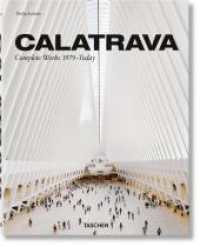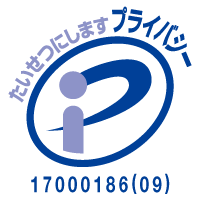Full Description
The Tungusic Languages is a survey of Tungusic, a language family which is seriously endangered today, but which at the time of its maximum spread was present all over Northeast Asia.
This volume offers a systematic succession of separate chapters on all the individual Tungusic languages, as well as a number of additional chapters containing contextual information on the language family as a whole, its background and current state, as well as its history of research and documentation. Manchu and its mediaeval ancestor Jurchen are important historical literary languages discussed in this volume, while the other Tungusic languages, around a dozen altogether, have always been spoken by small, local, though in some cases territorially widespread, populations engaged in traditional subsistence activities of the Eurasian taiga and steppe zones and the North Pacific coast.
All contributors to this volume are well-known specialists on their specific topics, and, importantly, all the authors of the chapters dealing with modern languages have personal experience of linguistic field work among Tungusic speakers.
This volume will be informative for scholars and students specialising in the languages and peoples of Northeast Asia, and will also be of interest to those engaged with linguistic typology, cultural anthropology, and ethnic history who wish to obtain information on the Tungusic languages.
Contents
List of tables
List of contributors
Preface and acknowledgements
Technical notes
List of abbreviations
Chart of the Manchu script
Language map
1. Tungusic as a language family
Ethnic nomenclature
Data and sources
Internal taxonomy
Typological profile
Grammatical framework
References and further reading
2. Early Far Eastern sources on Tungusic
Chinese sources
Japanese sources
Korean sources
References and further reading
3. Early Western sources on Tungusic
Types of sources
Eighteenth century
Nineteenth century
References and further reading
4. Proto-Tungusic
Data and sources
Vowel system
Vowel harmony
Consonant system
Morpheme structure
Word formation
Number and case
Numerals
Pronouns
Person marking
Verbal stems
Verbal forms
Syntax
Lexical structure
References and further reading
5. Jurchen
Data and sources
Notational conventions
The writing system
Origin of the Jurchen script
Segmental structure
Nominal forms
Numerals
Pronouns
Verbal forms
Lexicon and language contacts
References and further reading
6. Written Manchu
Data and sources
Segmental structure
Phonotactics and morphophonology
Word formation
Number and case
Numerals
Pronouns
Participles
Converbs
Complex verbal forms
Imperatives
Syntax
Lexicon and language contacts
List of primary sources
References and further reading
7. Siberian Ewenki
Taxonomic status
Dialectal division
Data and sources
Segmental structure
Phonotactics and morphophonology
Word formation
Number and case
Numerals
Pronouns
Person marking
Verbal forms
Verbal functions
Syntax
Lexicon and language contacts
References and further reading
8. Orochen
Data and sources
Segmental structure
Phonotactics and morphophonology
Word formation
Number and case
Adjectives
Numerals
Pronouns
Person marking
Other word classes
Verbal morphology
Participles
Imperatives
Other modal forms
Converbs
Syntax
Lexicon and language contacts
References and further reading
9. Solon
Data and sources
Segmental structure
Phonotactics and morphophonology
Word formation
Number and case
Numerals
Pronouns
Person marking
Verbal morphology
Participles
Imperatives
Converbs
Phrase structure
Sentence types
Lexicon and language contacts
References and further reading
10. Neghidal
Data and sources
Segmental structure
Phonotactics and morphophonology
Word formation
Number and case
Numerals
Pronouns
Person marking
Verbal morphology
Participles
Finite tense and aspect
Imperatives
Other modal forms
Converbs
Syntax
Lexicon and language contacts
References and further reading
11. Ewen
Dialectal division
Data and sources
Segmental structure
Phonotactics and morphophonology
Word structure and word classes
Word formation
Number and case
Adjectives
Numerals
Pronouns
Person marking
Other word classes
Verbal morphology
Participles
Finite tense and mood
Converbs
Phrase structure
Sentence types
Passive and causative
Complex sentences
Lexicon and language contacts
References and further reading
12. Oroch
Taxonomic status
Data and sources
Segmental structure
Phonotactics and morphophonology
Word formation
Number and case
Numerals
Pronouns
Person marking
Other word classes
Verbal morphology
Voice and aspect
Participles
Imperatives
Other modal forms
Converbs
Syntax
Lexicon and language contacts
References and further reading
13. Udihe
Data and sources
Segmental structure
Phonotactics and morphophonology
Word formation
Number and case
Adjectives
Numerals
Pronouns
Person marking
Other word classes
Verbal morphology
Voice and aspect
Participles
Finite tense and mood
Converbs
Complex predicates
Syntax
Lexicon and language contacts
References and further reading
14. Nanai
Data and sources
Segmental structure
Phonotactics and morphophonology
Word formation
Number and case
Adjectives
Numerals
Pronouns
Person marking
Other word classes
Verbal morphology
Voice and aspect
Participles
Finite indicative forms
Imperatives
Other modal forms
Converbs
Syntax
Lexicon and language contacts
References and further reading
15. Ulcha
Taxonomic status
Data and sources
Segmental structure
Phonotactics and morphophonology
Word formation
Number and case
Adjectives
Numerals
Pronouns
Person marking
Other word classes
Verbal morphology
Voice and aspect
Participles
Finite indicative forms
Imperatives
Other modal forms
Converbs
Syntax
Lexicon and language contacts
References and further reading
16. Uilta
Data and sources
Segmental structure
Phonotactics and morphophonology
Word formation
Number and case
Numerals
Pronouns
Person marking
Verbal morphology
Participles
Finite indicative forms
Imperatives
Converbs
Phrase structure
Sentence types
Complex sentences
Lexicon and language contacts
References and further reading
17. Spoken Manchu
Dialectal division
Data and sources
Segmental structure
Phonotactics and morphophonology
Word formation
Number and case
Numerals
Pronouns
Verbal forms
Complex predicates
Sentence types
Complex sentences
Lexicon and language contacts
References and further reading
18. Sibe
Data and sources
Segmental structure
Phonotactics and morphophonology
Word formation
Number and case
Numerals
Pronouns
Verbal forms
Complex predicates
Syntax
Lexicon and language contacts
References and further reading
19. Sociolinguistic aspects of Tungusic
Demographic background
Legislational status
Data and sources
Ewenki as a supraregional language
Ewen in northeastern Siberia
Amur-Sakhalin region
Tungusic languages in education
Tungusic languages in public spheres
Future prospects
References and further reading
20. Tungusic in time and place
Data and sources
External relationships
Areal position
Protohistorical setting
Stages of expansion
Sic transit gloria
References and further reading
Index








